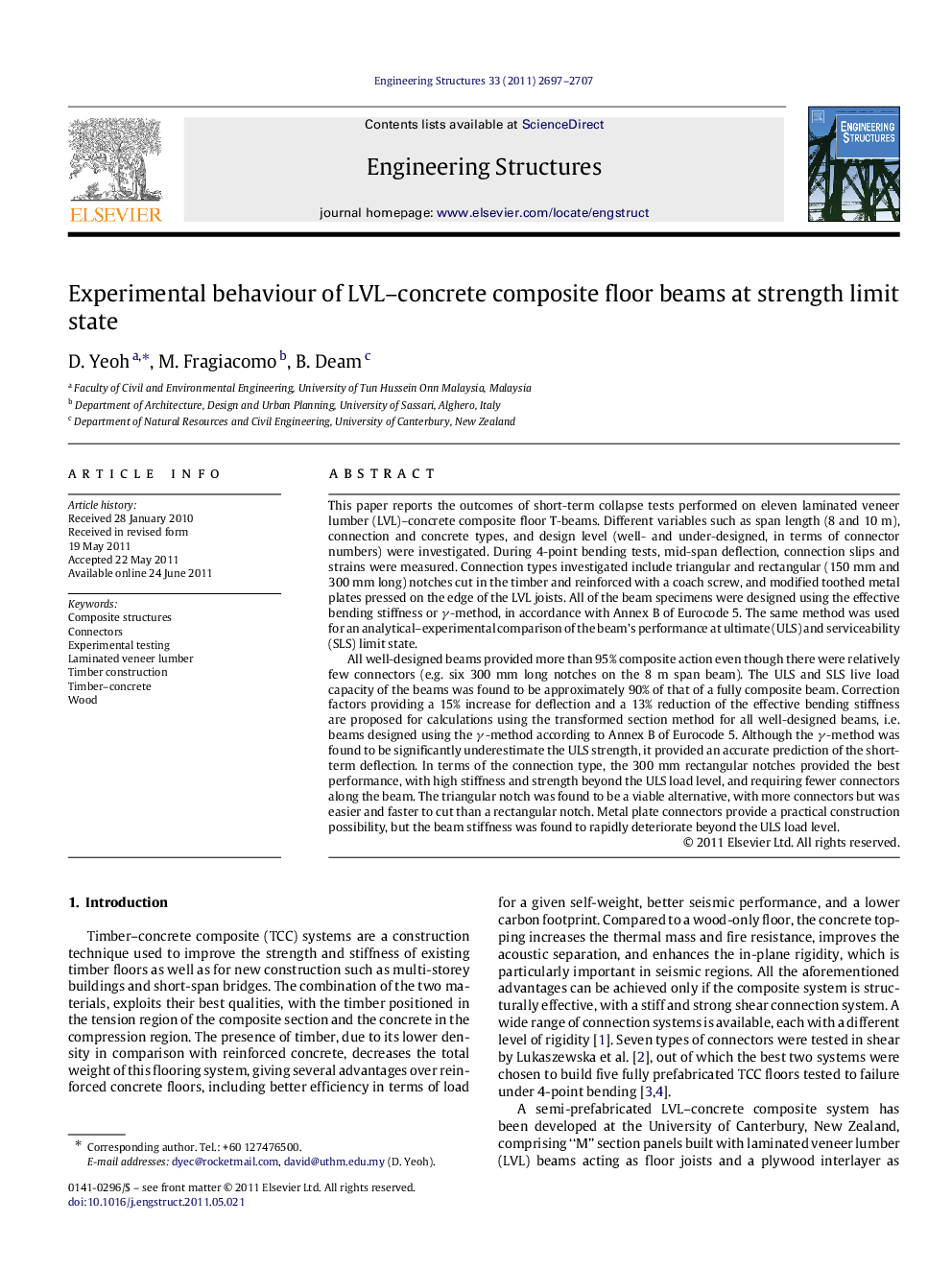| کد مقاله | کد نشریه | سال انتشار | مقاله انگلیسی | نسخه تمام متن |
|---|---|---|---|---|
| 267702 | 504409 | 2011 | 11 صفحه PDF | دانلود رایگان |

This paper reports the outcomes of short-term collapse tests performed on eleven laminated veneer lumber (LVL)–concrete composite floor T-beams. Different variables such as span length (8 and 10 m), connection and concrete types, and design level (well- and under-designed, in terms of connector numbers) were investigated. During 4-point bending tests, mid-span deflection, connection slips and strains were measured. Connection types investigated include triangular and rectangular (150 mm and 300 mm long) notches cut in the timber and reinforced with a coach screw, and modified toothed metal plates pressed on the edge of the LVL joists. All of the beam specimens were designed using the effective bending stiffness or γγ-method, in accordance with Annex B of Eurocode 5. The same method was used for an analytical–experimental comparison of the beam’s performance at ultimate (ULS) and serviceability (SLS) limit state.All well-designed beams provided more than 95% composite action even though there were relatively few connectors (e.g. six 300 mm long notches on the 8 m span beam). The ULS and SLS live load capacity of the beams was found to be approximately 90% of that of a fully composite beam. Correction factors providing a 15% increase for deflection and a 13% reduction of the effective bending stiffness are proposed for calculations using the transformed section method for all well-designed beams, i.e. beams designed using the γγ-method according to Annex B of Eurocode 5. Although the γγ-method was found to be significantly underestimate the ULS strength, it provided an accurate prediction of the short-term deflection. In terms of the connection type, the 300 mm rectangular notches provided the best performance, with high stiffness and strength beyond the ULS load level, and requiring fewer connectors along the beam. The triangular notch was found to be a viable alternative, with more connectors but was easier and faster to cut than a rectangular notch. Metal plate connectors provide a practical construction possibility, but the beam stiffness was found to rapidly deteriorate beyond the ULS load level.
► Outcomes of short-term collapse tests performed on eleven laminated veneer lumber (LVL)–concrete composite floor T-beams.
► Different variables such as span length (8 and 10 m), connection and concrete types, and design level were investigated.
► During 4-point bending tests, mid-span deflection, connection slips and strains were measured.
► All well-designed beams provided more than 95% composite action even though there were relatively few connectors.
► The ULS and SLS live load capacity of the beams was found to be approximately 90% of that of a fully composite beam.
Journal: Engineering Structures - Volume 33, Issue 9, September 2011, Pages 2697–2707